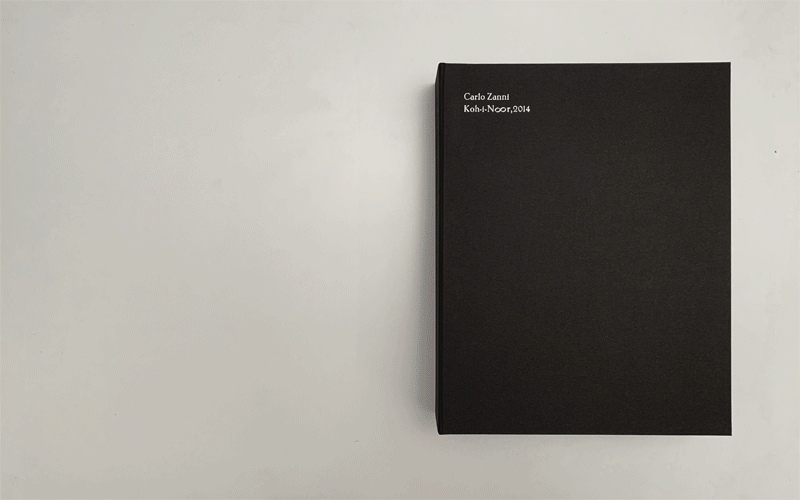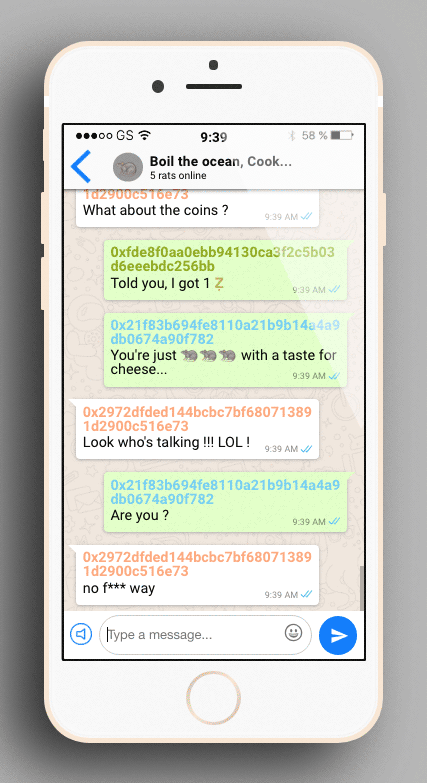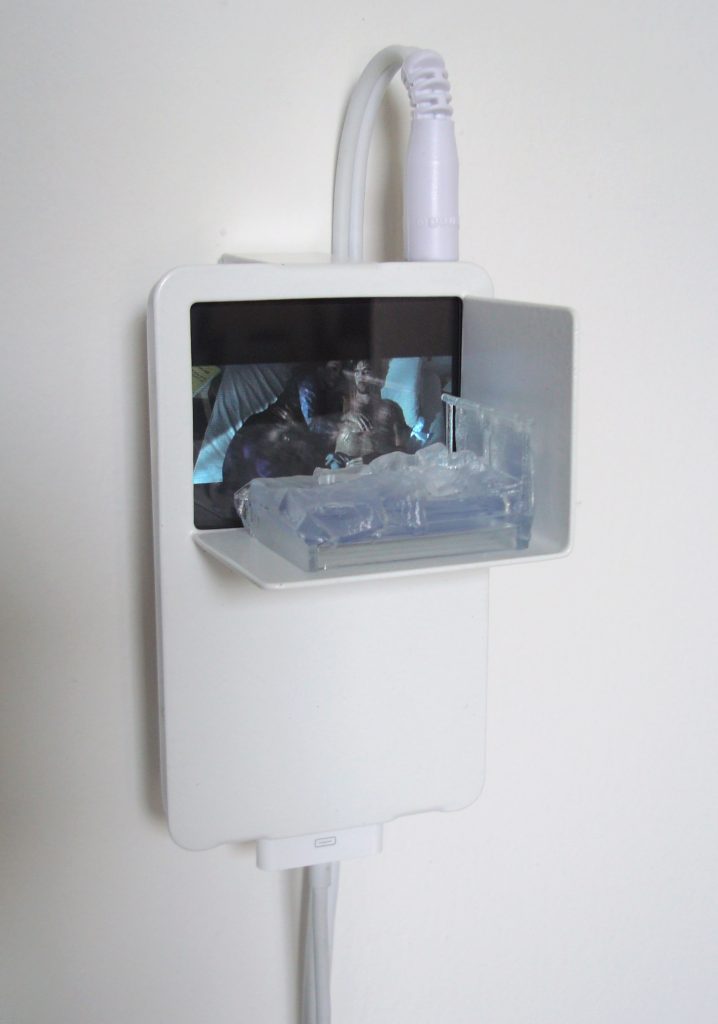Interview by Jack Apollo George

Carlo Zanni, Koh-i-Noor, 2014 – ViBo XXL
Imagine a world where works of art do not become the exclusive property of the highest bidder, where the assignation of the term art does not automatically render something exclusive. Admittedly, an oil painting might be difficult to share outside of the confined scope of museum loans and touring exhibitions. It can only be in one place at one time. But what of the more transient, less concretely embodied works typical of many contemporary creators?
It seems insane that video art, once unplugged from the white walls of your favourite modern gallery, is impossible to enjoy unless you buy it for a high fee. Surely the value of something eminently replicable—digital—is different from something that is molecularly unique—physical. Why are we allowing contemporary digital art to be defined by the economics of the Renaissance? Artist and author Carlo Zanni was born in La Spezia, Italy in 1975. Since the turn of the century, his multimedia practice has focused on the use of internet data to explore social consciousness and identity.
At the same time, if you were to buy a work from a digital artist, in order to possess it fully, you probably shouldn’t be buying a copy manifested as an image or a video, but the source file itself. What we see when we appreciate digital art is just a mirror, a reflective reading of the work—a video or an image that is generated from that original file.
Carlo Zanni was theorising about this subject way back in 2001, via a project called The Church of Software where he proposed that the file be seen as the work of art and he has kept up the good work ever since. In 2017, his perceptive thinking came full circle with the book Art in the Age of the Cloud, which was published by Diorama Editions in Milan. This discursive, exploratory work, which flits from topics as varied as Napster to Walter Benjamin, tackles how emerging technologies can change the way we both buy and sell art in the modern world.
Zanni challenges our latent insistence on treating all visual art like a Botticelli painting when in the digital age the model offered by a distributor like iTunes might make more sense. He is continually exploring new ways to invigorate his practice, from developing a cryptocurrency in his own name to setting up ViBo, an “uneditioned, unsigned and inexpensive” format for buying and selling contemporary art.
By rethinking the very rules of the industry he operates in, Zanni is unusual in as far as his highly conceptual bent is eminently practical. His questioning of the rules that govern purchasing and selling art can have a massive impact on the physical and pecuniary reality of contemporary artists.
Carlo Zanni is taking part in the exhibition Tu Vs. Everybody that runs at 211-b Giudecca Island in Venice from May 8 until the end of November 2019.


Automatic chat, Etherscan data about ZANNI (Ẓ) crypto coin
Right: Carlo Zanni, Deny Thy Father & Refuse Thy Name (2016). Photo credit: Elenia Megna
Artist and author of Art in the Age of the Cloud (2017); for those that are not familiar with your background and work, could you please tell us a bit about how and when your interest in technology and Internet data as an artistic medium come about?
It was 1997, I guess, and by chance, I went to study web design which was at the very beginning of that time. When I decided to work as an artist, I basically started merging together my former background -much more classic (storytelling, comics, illustration, paintings)- and the new research field I was discovering those days.
In your book Art in the Age of the Cloud (2017), a central theme is how the art market has failed to adapt to technological innovation. Has anything changed since the book’s publication? Would you update its thesis?
Not yet, because the book is pretty new. But yes, I would update it with more case studies and some new outcomes of my research. Things are moving right now, much more than seven years ago when I started writing it. What it seems to me is that we are still at the point where galleries see the Internet as a way to expand their market using the same rules they have been using so far.
So they sell physical objects, that is fine, and in rare cases, they sell video art, but they sell video art in the wrong way, with the wrong selling model. So things will never change this way. What I mean is that artists and galleries should approach video art and new media projects by taking advantage of their own inner specs and not going against them. What I propose is to sell video art – which is much simpler than new media or internet projects – both in digital downloads for 10€, for instance, and in more expensive physical editions playing with the associated rights.
In ‘Art in the Age of the Cloud’, you mention your project ViBo…
ViBo XXL is a project that I started several years ago. It was my attempt to start selling video art in a way a bit different from what you can averagely find in galleries that tend to sell video art, like they sell a painting or a photo. The first ViBo I did was a A5 video brochure where you can preview the video on a cheap lcd screen and download the hires files into your computer to be watched on a wider screen, for instance.
With time this project transformed and evolved into a complex system of ViBo versions. So to cut this short, the main idea is that for a piece of video art, you can buy the file for 10€ or physical editions going up to 5000€, for instance. At 5000€, you buy the same video you get for 10€, but you get a beautiful gift box and a package of rights (a license, a contract).
I’ve been inspired by a system in use at Taschen, where they release a title and then build an ecosystem of limited editions for collectors with prices ranging from 750 to 3/5000. I’m merging it with what collector Alain Servais says, that when you buy video art, you are instead buying more a package of rights than something like an object. So with ViBo XXL, you get the box with fine art prints, a book and the files, but above all, a license allows you to do quite a lot.
One of the more radical things you can do is that if you own a ViBo XXL is to distribute the project. What I mean is that I give the owner rights to digitally distribute up to 500 copies of the file for free or for sale. The role of collector expands, becoming at the same time co-producer and distributor. This is another aspect that’s at the core of the book.
In ‘Art in the Age of the Cloud’, you make the claim that the device can be seen as the coauthor of a work of art. Could you expand on that thought?
What I meant is that the final feeling of a project changes if you show/watch it on a smartphone or on a 27″ screen or if it is video projected. The setup you use to show a video or an Internet project says something about the project by itself. You can’t skip this, even if you don’t care about it (I am one of those who doesn’t care too much about these things. I like to show the same project on different devices with no problem.
Once I’ve shown the same video on 4 or 5 different devices for instance, in the same show). At the same time, as a viewer, I think that the gap there is between watching – for instance- a video on a laptop Vs. video projected is not as big as seeing painting as a picture printed on paper Vs. for real when you go face to face with it.
This is one of the huge differences between painting and video art, and as such, to me, we should use alternative selling models (from music, film, and book industry) instead of keeping going with the classic “very expensive single object” model even for media artworks, trying to artificially wrap them with a fake idea of scarcity to justify high prices.
As an artist, what devices are you excited about working with in the future?
I did some projects using iPods and iPhones because those were the devices I was continuously using on a daily basis, so to me, it has been pretty natural to investigate and use them for my practice. I don’t know, but perhaps folding phones and quantum computers. AR is also finally reaching new interesting frontiers.
You recently launched your own ‘Zanni’ coin cryptocurrency. Do you believe in the transformative potential of the blockchain, or do you see it more as a threat to artistic independence?
Zanni coin is a work in itself. It’s a metaphor or an iperbole for the art market at its peak. Transactions, digits, commas, accounts. Definitely, I think the blockchain and the token systems will transform and change our society and the art world too. There are already many services experimenting in this direction.
Many of your projects (i.e.Boil the ocean. Cook the books. Eat your own dog food) rely on the auto-generation of text. How do you think the predictive capacities of modern technology affect artist authorship?
I think they are just great tools at your disposal, and it doesn’t change that much. You can still make a masterpiece or a piece of s**…
What’s your chief enemy of creativity?
Creativity itself. As an artist, I don’t want to use “creativity” for my projects if not for the details or what surrounds them. But for the very core of my art, I try to stay away from similar mental processes, and it’s not easy. I try to be open to the unexpected as much as I can. At least, that’s my attempt.
You couldn’t live without…
My time.






